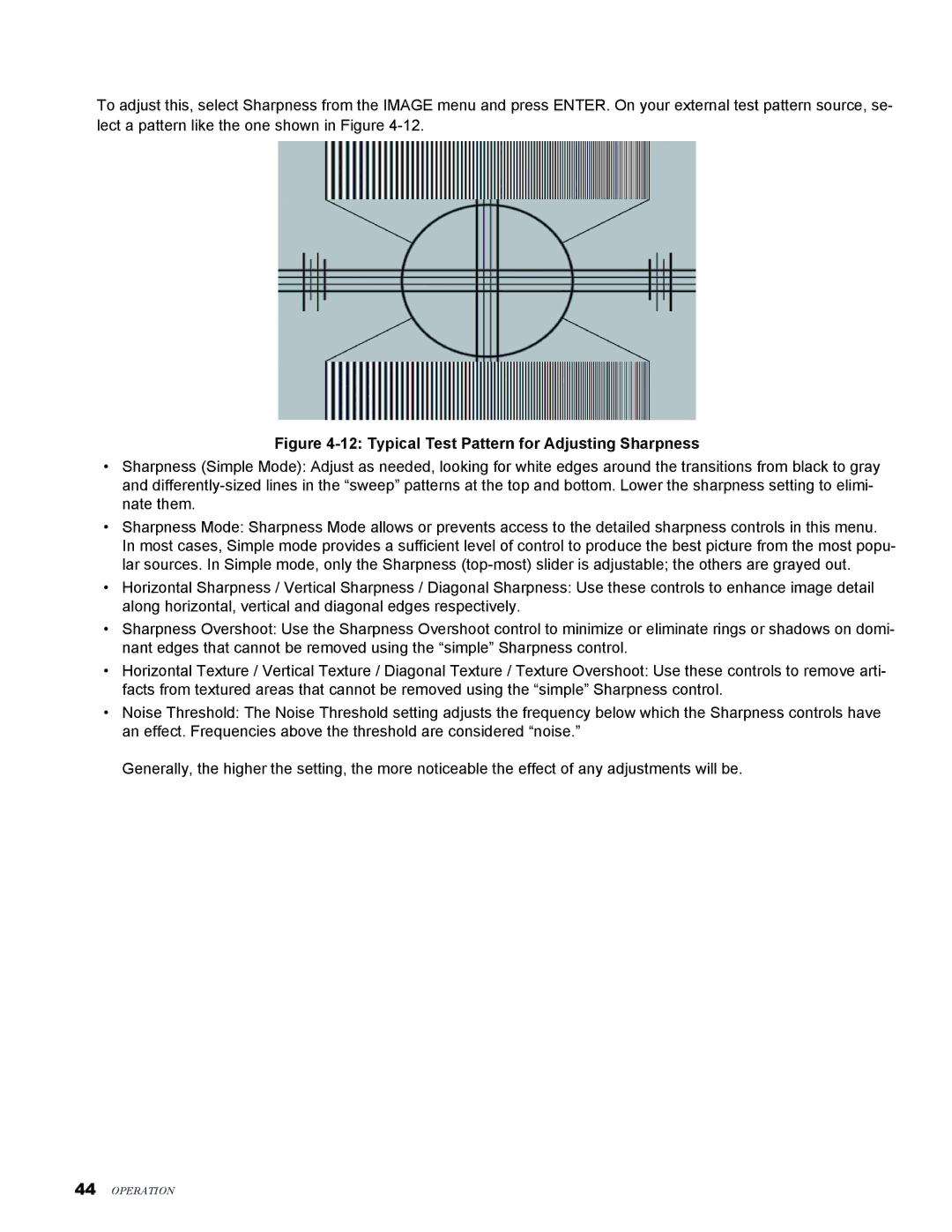
To adjust this, select Sharpness from the IMAGE menu and press ENTER. On your external test pattern source, se- lect a pattern like the one shown in Figure
Figure 4-12: Typical Test Pattern for Adjusting Sharpness
•Sharpness (Simple Mode): Adjust as needed, looking for white edges around the transitions from black to gray and
•Sharpness Mode: Sharpness Mode allows or prevents access to the detailed sharpness controls in this menu. In most cases, Simple mode provides a sufficient level of control to produce the best picture from the most popu- lar sources. In Simple mode, only the Sharpness
•Horizontal Sharpness / Vertical Sharpness / Diagonal Sharpness: Use these controls to enhance image detail along horizontal, vertical and diagonal edges respectively.
•Sharpness Overshoot: Use the Sharpness Overshoot control to minimize or eliminate rings or shadows on domi- nant edges that cannot be removed using the “simple” Sharpness control.
•Horizontal Texture / Vertical Texture / Diagonal Texture / Texture Overshoot: Use these controls to remove arti- facts from textured areas that cannot be removed using the “simple” Sharpness control.
•Noise Threshold: The Noise Threshold setting adjusts the frequency below which the Sharpness controls have an effect. Frequencies above the threshold are considered “noise.”
Generally, the higher the setting, the more noticeable the effect of any adjustments will be.
44Operation
